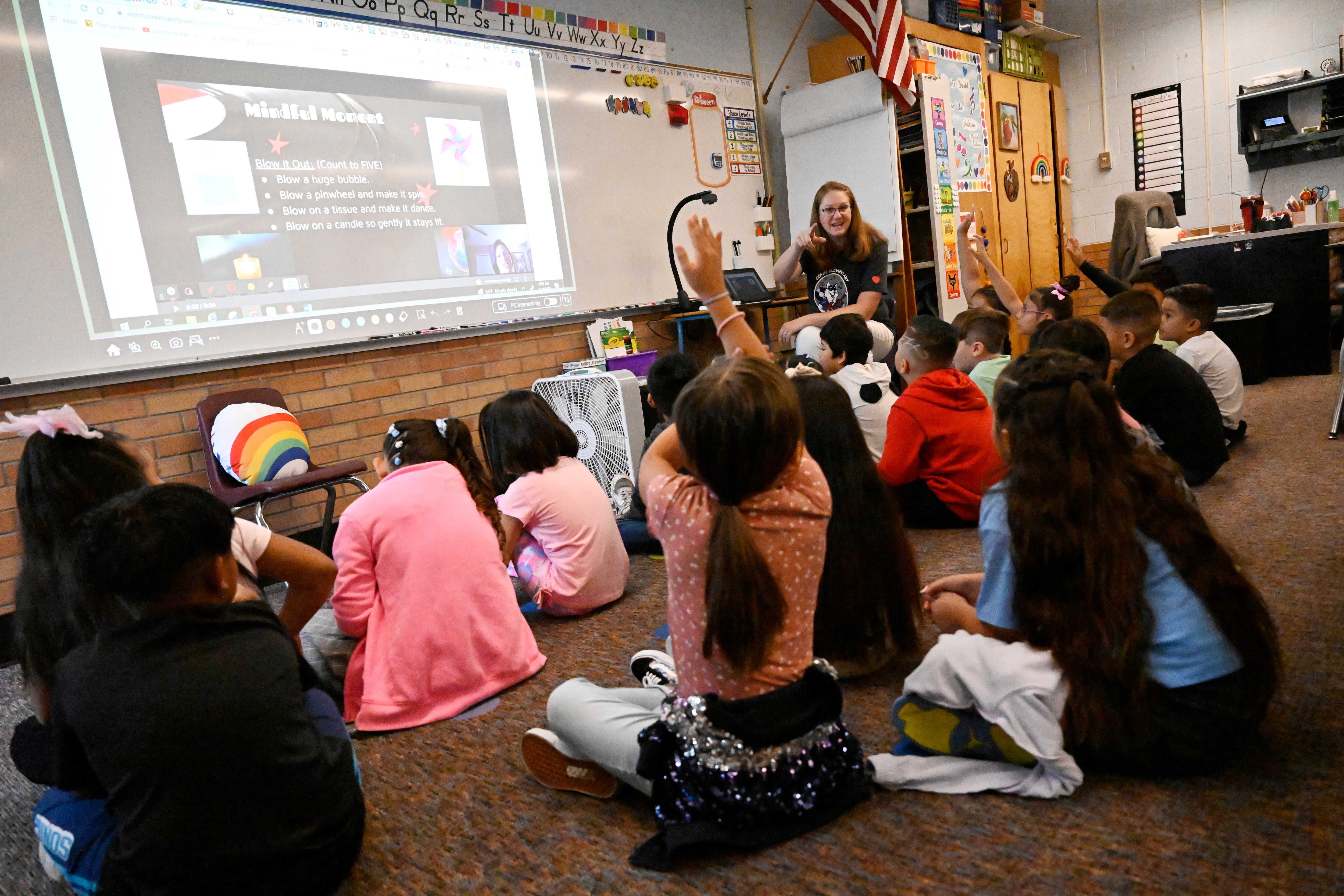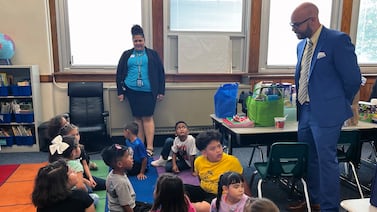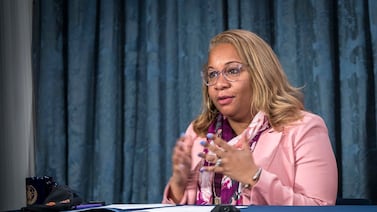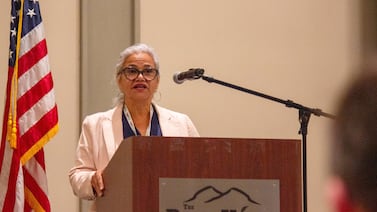Sign up for Chalkbeat Colorado’s free daily newsletter to get the latest reporting from us, plus curated news from other Colorado outlets, delivered to your inbox.
As the deadline approaches to spend federal pandemic relief for schools, Colorado districts face a decision: Which programs and staff funded by that aid will they keep?
Colorado got nearly $1.2 billion in the third and final round of pandemic relief funding, known as Elementary and Secondary School Emergency Relief III, or ESSER III. The state divided most of that amount — about $1 billion — among its 178 school districts, giving more money to districts serving students with higher needs.
The federal government intended ESSER to help address the academic impact of lost learning time during the pandemic, and districts had to set aside a portion of the funds specifically for that purpose. But local officials had wide discretion to spend it on other things too.
Colorado’s two largest districts, 88,000-student Denver Public Schools and 76,000-student Jeffco Public Schools, got $209.6 million and $68.2 million, respectively. School districts must allocate their ESSER III money by Sept. 30 and spend it by January. However, states can ask the federal government for an extension to the spending deadline on behalf of districts and schools, and Colorado officials have indicated that they will.
Jeffco will continue spending on new curriculum, safety
Once ESSER runs out, Jeffco Public Schools will spend $9 million to continue some of the work previously funded by the federal COVID relief money. Jeffco officials said they’ve tracked outcomes and feel confident that they’re maintaining the most important things.
“Overall the things that were working, I think we found ways to continue to sustain them or sustain them in maybe a little different way,” said Dr. Kym LeBlanc-Esparza, deputy superintendent of Jeffco schools, who oversaw the spending of ESSER.
Among the items Jeffco will maintain spending on: security personnel for middle schools, some training for support positions including paraprofessionals, mental health telehealth appointments for students through Hazel Health, a continued rollout of new curriculum including for reading in secondary schools, and an increased daily rate for substitute teachers.
District leaders said the increased substitute teacher pay really helped. When the sub pay went up, so did the number of teacher vacancies that were filled by substitutes.
Denver to continue spending on summer programs, mental health
Denver Public Schools is spending $7.1 million to continue programming that’s been funded by ESSER. That includes some after-school and summer programming, as well as the salaries of about 40 staff who work in those programs. It also includes the salaries of 14 additional mental health workers and five additional armed safety patrol officers who respond to emergency calls.
“We are grateful for the money, and we did receive a lot of money,” said Katie Hechavarria, the Denver district’s executive director of finance. Losing the ESSER funding, she said, “will be felt across the district,” but added that officials have planned for it.
Deep staff cuts not expected in many districts
Nationwide, district officials have worried about the effect of the so-called “ESSER cliff” when the relief money runs out. One of the most-feared outcomes has been that schools would have to lay off teachers and other staff they’d hired with ESSER money.
Chalkbeat submitted open records requests to 15 school districts across Colorado and found that most are not eliminating positions as a result of ESSER’s expiration. Many districts have found ways to keep most, if not all, positions that had been funded by the aid.
Denver will lose the equivalent of about 16 full-time positions previously funded by ESSER, as well as another eight temporary positions that were expected to end anyway. The district had the equivalent of more than 11,700 full-time positions last year.
Jeffco will lose about 34 individuals whose jobs were funded by ESSER. People in most other positions that were cut were able to fill other roles, or were only working a handful of hours to supplement their existing district role, district leaders said.
High-dosage tutoring will end in Jeffco
One thing Jeffco will eliminate is high-dosage tutoring. The district used ESSER to pay for more than 100 part-time tutoring positions that will now be cut. But officials said many of those positions were filled by teachers who will continue to work for the district.
Although the district is cutting tutoring, leaders said research showed that the resources tutors were using may still deliver results even without the additional staff. Students who used the Lexia Core5 program made significant gains, according to district data.
Jeffco is also cutting back on its ESSER-funded expansion of summer programming due to staffing challenges. And it will no longer pay teachers and staff for training time outside of the school day as opposed to pulling them during the school day, an arrangement that LeBlanc-Esparza said the district would have liked to keep but couldn’t afford.
Denver will cut bonuses for hard-to-staff positions
Meanwhile, Denver will no longer offer ESSER-funded hiring bonuses for hard-to-staff positions, such as nurses. The district will also increase the fees some families pay for its before and after school program, called Discovery Link. ESSER had allowed the district to hold the fees steady.
There may be other cuts in Denver. The district doled out a significant chunk of its ESSER dollars directly to schools over the course of the three previous school years. Many schools initially spent it on teachers, paraprofessionals, and other staff.
But in an attempt to wean schools off the federal relief money before it expired, DPS reduced its direct-to-school payments over those three years.
By 2023-24, DPS’ 150 district-run schools were funding the equivalent of 63.5 full-time positions with ESSER money, an average of less than half a position per school, Hechavarria said.
She didn’t know how many school-based positions were cut this school year because of the expiration of federal aid. Those decisions are made by principals who don’t differentiate between ESSER-funded positions and other positions in their budgets, Hechavarria said.
“It’s difficult to attribute a change happening at a school just to stimulus dollars going away,” she said.
Yesenia Robles is a reporter for Chalkbeat Colorado covering K-12 school districts and multilingual education. Contact Yesenia at yrobles@chalkbeat.org .
Melanie Asmar is the bureau chief for Chalkbeat Colorado. Contact Melanie at masmar@chalkbeat.org .






